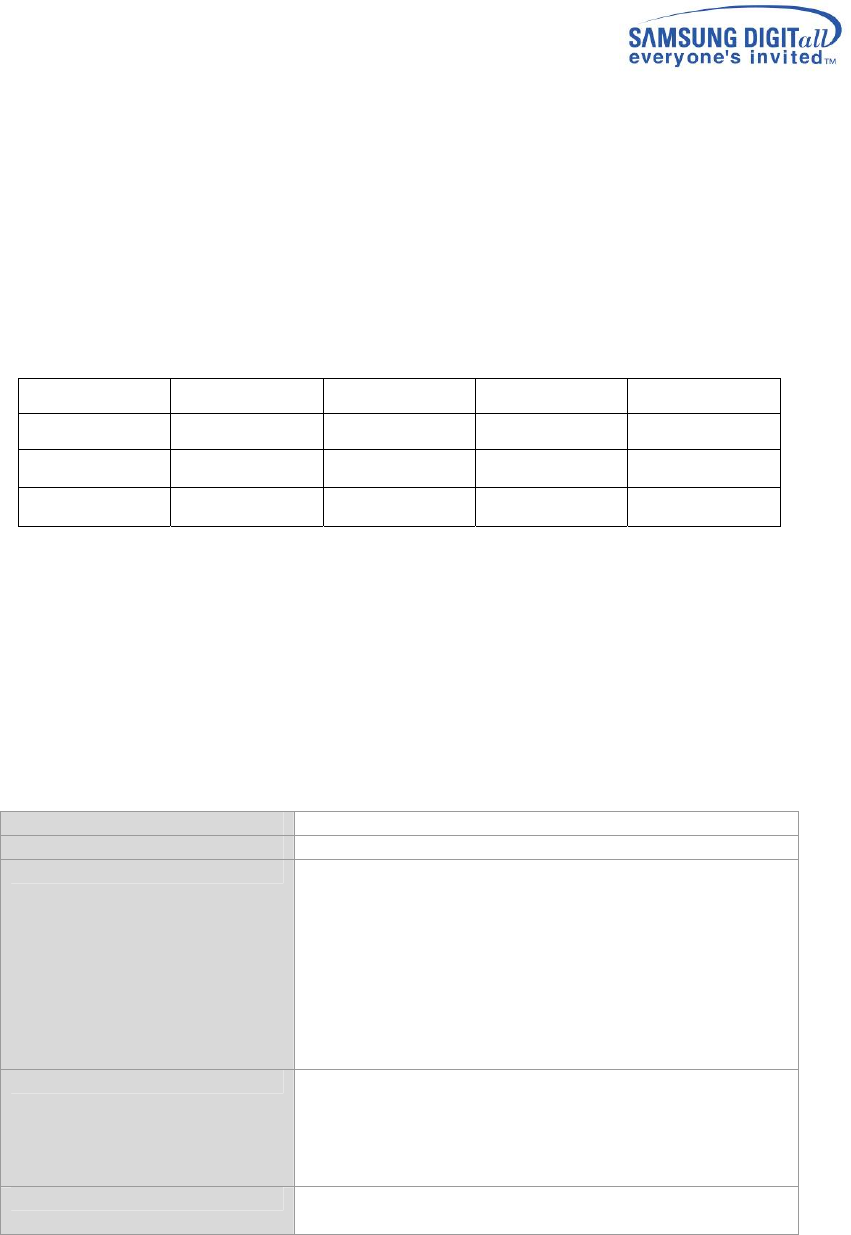
6 Linux RFS v1.3.0 Porting Guide
Most of the sources are platform-independent codes except PAM. Please refer the “XSR Porting
Guide” for more detailed information. Before going into detail about RFS customization
according to target requirement, next section will explain about objects that Linux RFS will
create during make (or build) steps.
2.2.3 RFS Memory Usage
Table 2 lists the RFS static memory usage.
Table 2 RFS Static Memory Usage (in bytes)
Module TEXT DATA BSS Total
RFS 45,112
680
4
45,796
XSR 80,808
2,692
4,288
87,788
Sum 125,920
3,372
4,292
133,584
2.3 Hardware Environment
In this porting guide, OMAP2420 is used as target board to give porting example of RFS. 3 shows
hardware information about OMAP2420.
Table 3 shows hardware information about OMA2420.
Table 3 Hardware information of OMAP2420
CPU ARM1136JF-S core and TMS320C55x DSP core
Memory SRAM: 640K bytes of shared inetrnal RAM
External Memory Interface 1. General Purpose Memory Controller (GPMC)
Up to 100MHz, NOR flash, NAND flash, SRAM, and
PSRAM asynchronous and synchronous protocols
16-bit data, up to eight chip-selects, 128M-byte
address bus, 1G-byte total address space
2. SDRAM controller (SDRC)
SDRAM, DDR mobile SDRAM, mobile DDR
16- or 32-bit data, two chip-selects,
configurations up to 2G bits on each chip-select 16bit
MPU Peripheral v6 instruction set architecture (ISA), 32K-byte
instruction and 3K-byte data
64-entry instruction and 64-entry data write buffer
Vector floating-point processor
Jazelle Java accelerator
OneNAND device Select OneNAND device according to your
requirement (1.8v/3.3v)


















